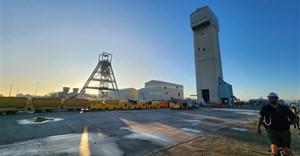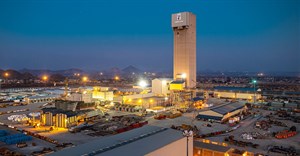Subscribe & Follow
Trending
Jobs
- Sales Representative - Chemical Manufacturing Gauteng
- Accounts/Inventory Clerk Johannesburg
- Customer Service Repairs Supervisor Vereeniging
- HR and Payroll Manager Sandton
- Electronic Workshop Technician Vereeniging
- Credit Controller West Rand
- Debtors/Creditors/General Accounts Clerk Pretoria North
- Senior Bookkeeper Irene
- Night Shift Production Manager Cape Town
- Buyer - Engineering Cape Town
Converter industry hits hard times

Euro 6 is the common name for European emissions standards coming into effect for passenger cars in the bloc September, 2015. But, according to one insider, the local industry has seen "no upgrades or investments of consequence" to meet this specification.
This is an extraordinary fact but few people will speak on the record. The reason, rumour has it, is that the industry is reaching for one last lifeline that might save it, and doesn't want government upset by any media reports.
SA has by far the largest reserves of platinum and palladium, metals crucial to the catalytic converter industry. It is also hard to imagine a better example of beneficiation, which trade and industry minister Rob Davies has repeatedly said is central to industrialisation.
And, at a time when the motor industry is enjoying huge government support one would expect the catalytic converter industry to be propped up too.
This hasn't happened, for two reasons.
Regulations took too long
The first is that the details of the motor industry's new automotive production and development programme (APDP) weren't nailed down for years. "We've had seven years of policy uncertainty," says a component industry insider. Discussions on the content of the programme began in 2006 and were still continuing late in 2012.
As far back as 2011, BMW's board member for production, later its chairman, Frank-Peter Arndt, expressed his displeasure with policy uncertainty in SA to Business Day "We need clear commitments," he said in March that year.
The second reason is more complex. Under the motor industry development programme (MIDP), the APDP's predecessor, the industry was heavily subsidised.
Roger Pitot, director of the National Association of Automotive Component and Allied Manufacturers, says some of the major car makers were importing 20,000 vehicles a year duty-free as a result of credits earned on their exports of catalytic converters.
It seems likely that the department of trade and industry and treasury did a cost/benefit analysis of the catalytic converter industry under the MIDP and found very little value there. Evidence of this is in the detail of the APDP, a programme with which component manufacturers have long expressed dissatisfaction.
International competition tough
Originally the catalytic converter industry was offered a rebate of only 5%, which was upped to 8% for "vulnerable industries". Despite receiving complaints, the department has since indicated that its generosity has reached an end.
"For [international component manufacturers], the APDP isn't as good as the MIDP," Pitot said last year. "The benefits are low. They're looking at the APDP and are saying that SA isn't that attractive. It's more expensive. So they're looking at other countries to do the business."
The same problem is experienced by other export-heavy local component manufacturers, such as leather suppliers, which also battle to compete without state assistance. It means that while catalytic converters and other components might be competitive at the factory gate, they struggle in their end markets.
The industry is believed to have approached the department of mineral resources for some kind of relief on the price of platinum.
Derek Engelbrecht, group executive for marketing at Impala Platinum, said last month the company had "heard rumblings that the catalytic converter industry is seeking relief from us [to adjust prices]".
Platinum prices
He said: "[The initiative] could be coming from the Catalytic Converter Interest Group (CCIG), which includes big groups like Johnson Matthey, the canning companies and the original equipment manufacturers, but the platinum industry is not a part of it.
"We have not been consulted. I believe that to benefit one industry, you do not need to harm another," Engelbrecht said.
Asked whether proposals had been put to government to impose price cuts for local beneficiation, Ken Dewar, executive director of the CCIG, said: "We are talking to the departments of mineral resources and trade and industry to see how we can regain the confidence of the international motor industry." He wouldn't go into detail, saying it was "difficult to dictate to government".
When asked how catalytic converter manufacturers could be seeking relief when platinum prices are so low and the industry is under such enormous pressure, Engelbrecht pointed out: "It is not metal prices that are making the catalytic converter industry uncompetitive, it is inefficiency in logistics and the supply chain."
He said: "We sell on contract to the big car companies and they allocate deliveries to their manufacturing sites, whether in Detroit or SA. There is no difference in the cost of the metal to manufacturers in SA and anywhere else."
European market changes fast
An additional difficulty faced by SA's catalytic converter industry is its vulnerability to the regulatory regime for motor vehicles in Europe, which changes extremely fast, as does the technology that underpins it. Manufacturers are not only looking at alternatives to platinum, such as palladium, they are starting to look at entirely new drive-train technologies.
SA's double whammy of uncompetitive component manufacturers and the dilly-dallying over the APDP has meant that Euro 6 is, in development and investment terms, a boat this country has missed.
SA's catalytic converter industry employs about 5,000 people, with, it is claimed, a further 25,000 downstream jobs in mines and logistics.
This, for many, will be reason enough to look at the regulatory regime around the catalytic converter industry in SA. Unlike a fully built-up motor vehicle, an exported catalytic converter, at 85% local content according to the CCIG, is a true net export.
And the DTI is adamant the industry has not been abandoned. Indeed, under the APDP, catalytic converter manufacturers can claim a rebate of up to 30% of any new investment in SA. Thereafter, "the onus is on them to identify and put in place very clear and serious competitiveness-raising programmes instead of waiting for benefits which will undermine the coherence of the APDP," said Nimrod Zalk, then deputy director-general at the DTI, in 2010.
In September last year Port Elizabeth-based catalytic converter manufacturer BASF announced retrenchments of 53 staff in an SA-only restructuring.
It seems likely they will not be the last because it is apparent, from the dearth of investment for future technologies, that the catalytic converter industry has failed to find efficiencies. As a result, even if the state changed its mind about supporting the industry, it might already be too late.
Source: Financial Mail via I-Net Bridge
Source: I-Net Bridge

For more than two decades, I-Net Bridge has been one of South Africa’s preferred electronic providers of innovative solutions, data of the highest calibre, reliable platforms and excellent supporting systems. Our products include workstations, web applications and data feeds packaged with in-depth news and powerful analytical tools empowering clients to make meaningful decisions.
We pride ourselves on our wide variety of in-house skills, encompassing multiple platforms and applications. These skills enable us to not only function as a first class facility, but also design, implement and support all our client needs at a level that confirms I-Net Bridge a leader in its field.
Go to: http://www.inet.co.za













